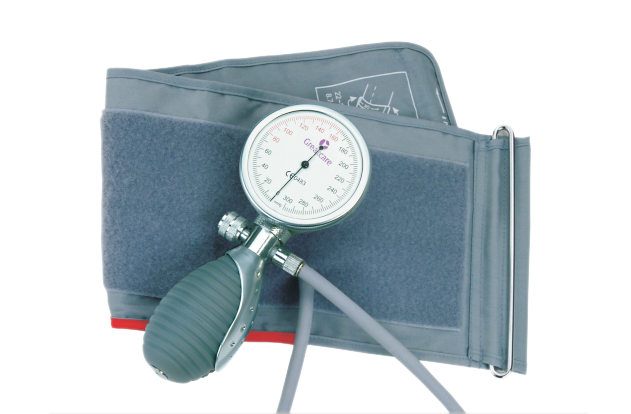
Aneroid Sphygmomanometer (palm type)
From the moment you step foot into a doctor's office, you can expect one of the first diagnostic tools to be used is the Palm Aneroid Sphygmomanometer. This handy device quickly and accurately measures your blood pressure and provides essential information about your health. But what is this device and how does it work? Read on to find out the whole story of the Palm Aneroid Sphygmomanometer.
Zinc alloy cover.
grey nylon cuff with D-ring, grey rough PVC bulb, PVC inflation system, non-stop pin, single tubing.
The Palm Aneroid Sphygmomanometer is a blood pressure measuring device that has been used for over 100 years. It is a simple, yet accurate way to measure blood pressure and is still in use today. The Palm Aneroid Sphygmomanometer was first invented in 1881 by Dr. Karl Vierordt. It was originally designed as a more comfortable alternative to the mercury sphygmomanometer, which was the standard at the time. The new design was much easier to use and more portable, making it ideal for use in doctors’ offices and hospitals. Over the years, the Palm Aneroid Sphygmomanometer has undergone some changes, but its basic design remains the same. Today, it is still one of the most popular blood pressure measuring devices available and is used by millions of people around the world.
Aneroid sphygmomanometers are the most commonly used type of blood pressure readings. They are easy to use and relatively inexpensive. Aneroid sphygmomanometers work by measuring the force with which your heart pumps blood through your arteries. The higher the force, the higher your blood pressure. Doctors use aneroid sphygmomanometers because they are quick and easy to use, and they provide an accurate reading of your blood pressure.
The aneroid sphygmomanometer is a device that is used to measure blood pressure. It consists of a cuff that is placed around the arm and inflated, a mercury column that is used to measure the pressure, and a stethoscope. The mercury column is connected to the cuff by a tube. The cuff is inflated until the mercury column is at the level of the heart. The stethoscope is used to listen to the heart beat. The blood pressure is then read from the mercury column.
Aneroid sphygmomanometers come in a variety of shapes and sizes, but they all have one thing in common: they measure blood pressure. There are two types of aneroid sphygmomanometers: manual and automatic. Manual aneroid sphygmomanometers are the most common type. They consist of a cuff that is placed around the upper arm and inflated with a hand pump. The cuff is then released and the mercury column in the gauge is allowed to fall. The systolic pressure (the top number) is read when the first sound is heard, and the diastolic pressure (the bottom number) is read when the sounds disappear. Automatic aneroid sphygmomanometers are similar to manual ones, but they have an electronic cuff that inflates automatically. They also have a digital display that shows the blood pressure readings.
In order to read your blood pressure from an Aneroid Sphygmomanometer, you will need to take the following steps:
1. Place the cuff around your upper arm, making sure that the bottom of the cuff is level with your heart.
2. Pump the cuff until it is tight enough to constrict your blood flow. You should feel your pulse in your fingers while doing this.
3. Slowly release the pressure in the cuff while listening for your pulse with a stethoscope.
4. As you listen, note the point at which you first hear your pulse and then note the point at which it disappears. The difference between these two points is your systolic blood pressure.
5. Continue releasing the pressure until you can no longer hear your pulse. This is your diastolic blood pressure.